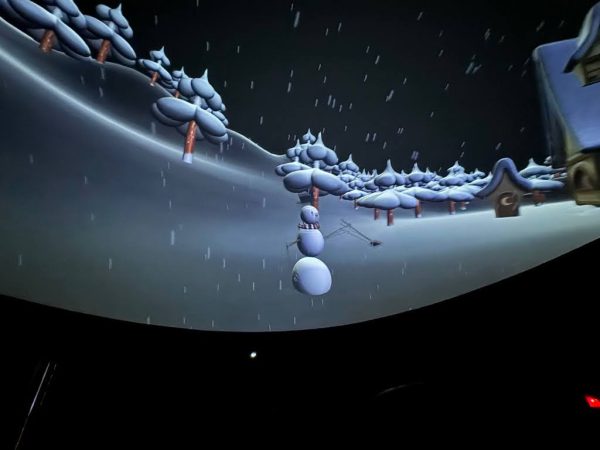Spring Dancefest: Standing Room Only
Always a popular semesterly event with students and community members, this year’s Spring Dancefest drew a large crowd. The chapel was filled on the evening of Friday, April 29 to the point that there was a call for a collective squish – only standing room was available midway through the night, and a line of students hoping to find a spot spilled outside onto the chapel steps.
The evening began with a number performed by only seniors, which was choreographed by seniors Abby Douglas and Rachel Dames to the song “Brand New” by Ben Rector. The line-up for the rest of the night included over 30 performances from 17 different dance groups, with styles ranging from hip hop to ballet.
First-year event attendee Meg McClenahan spoke on how crowded yet exciting the event itself was.
“I got there right when it started, and there were no seats left,” McClenahan said. “I was kind of perched on the edge of the balcony, but I was just happy I got to see the amazing performances. Dance has the power to tell stories in a really unconventional way, and it’s easy to forget how powerful movement can be as a medium.”
Most dancers involved seemed to agree with McClenahan’s sentiments, and noted that such a physically-based mode of storytelling could be uniquely difficult to maintain during a pandemic. Many performers were drawn to join Colgate’s dance groups after attending Winter Dancefest this past December, which was the first in-person Dancefest after a year of solely virtual performances.
“I first joined Colgate Ballet Company and Musical Theater Dance because after attending Dancefest last semester, I knew I had to be involved one way or another,” first-year Laine Girolamo said. “My main goal was to reconnect with ballet, the art that probably shaped me into the creative person I am today.”
The larger social context of dance also came to light during a collaborative performance by MELANATED and Afrobeat, two groups created by and for people of color (POC) on campus. The dance’s choreography involved a sort of call-and-response, which took inspiration from military drill teams, Gumboot (a method of communication by stomping used by South African miners who weren’t allowed to speak to each other in the mines) and Step, a footwork-based style of dance.
Senior Grace Darko, the group’s leader and choreographer, called out commands to the lineup of black-and-gold clad dancers, who moved as a synchronized collective. The performance was a capella style, without any soundtrack beyond the stomping of feet.
“Attention,” Darko would call out, marching across the stage, and the line of dancers would straighten their backs and pivot on their heels in response. The command would then be followed by an “at ease” from Darko.
First-year Alex Jones, a member of MELANATED and Wolfpack, claimed that she joined MELANATED after seeing their performance at Dancefest first semester.
“I joined MELANATED because I was interested in being in a group that was created for POCs,” Jones said. “We became kind of like a family. I was new to the group and most of the members already knew each other, but I felt accepted and included in the group.”
The process of preparing for Dancefest served to knit groups closer together, and the performances, down to the choreography, were highly collaborative. First-year and Fuse Dance Company member Antonia Gialamas explained the practice routine that her group follows during the school year.
“We have rehearsal twice a week,” Gialamas said. “Each day is dedicated to one of our two pieces. They are all student choreographed and we learn little bits at a time. We also would dedicate rehearsals to researching, figuring out and practicing lifts, because those take a long time to perfect.”
Both of the group’s dances, one to a slow cover of Bleachers’ “Don’t Take the Money,” and the other to “Lucerne” by Richy Mitch and the Coal Miners, had been adjusted to perfection over the course of months.
“The choreographers were super flexible and explained the moves really clearly, so although we are performing and learning their work, it does feel like a group effort,” Gialamas said.
Few dance connoisseurs populated the packed chapel, but the whole audience – even those relegated to the outer edges of the stage – felt some connection to the work onstage.
“You didn’t have to know anything about dance to really appreciate its impact,” McClenahan said. “It’s more about touching people than anything.”





